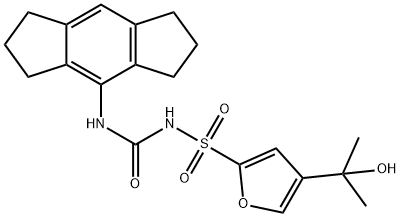Description
MCC-950 (210826-40-7) was originally found to act as a cytokine release inhibitory drug (CRID), arresting activated monocytes and preventing activation of caspase-1.1?Discovered to be a novel inhibitor of the NLRP3 and AIM2 inflammasomes.2?MCC-950 blocks canonical and noncanonical NLRP3 activation at nanomolar concentrations.3?Inhibits interleukin 1β (IL-1β) secretion?in vivo?and attenuates the severity of experimental autoimmune encephalomyelitis (an MS disease model).3?Disrupts the interaction between AIM2 and ASC in a reconstituted cell-free inflammasome.4?MCC-950 is a valuable new tool for exploring the pathophysiology of NLRP3.
Uses
MCC950 selectively inhibits pyrin domain-containing protein 3 (NLRP3) inflammasome, a protein complex involved in the inflammatory process (1). The NLRP3 inflammasome is related to a wide range of immune disorders such as multiple sclerosis, inflammatory bowel disease, auto-immune and auto-inflammatory diseases (2). MCC950 has been shown to specifically inhibit the activation of NLRP3 but not the AIM2, NLRC4 or NLRP1 inflammasomes (1). MCC950 is a potential therapeutic for NLRP3-associated syndromes.
References
1) Laliberte?et al.?(2003),?Glutathione s-transferase omega 1-1 is a target of cytokine release inhibitory drugs and may be responsible for their effect on interleukin-1beta posttranslational processing; J. Biol. Chem.,?278?16567
2) Coll?et al. (2011),?The cytokine release inhibitory drug CRID3 targets ASC oligomerisation in the NLRP3 and AIM2 inflammasomes; Clin. PLoS One,?6(12)?e29539
3) Coll?et al.?(2015),?A small-molecule inhibitor of the NLRP3 inflammasome for the treatment of inflammatory disease; Nat. Med.,?21?248
4) Kaneko?et al.?(2015),?Reconstituted AIM2 inflammasome in cell-free system; J. Immunol. Methods,?426?76

